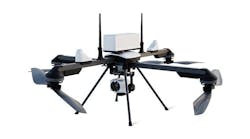Unmanned Systems Industry Praises House Committee for Examining the Potential of Unmanned Aircraft in Advancing Scientific Research
Arlington, VA - On February 15, the House Science, Space and Technology Subcommittee on Oversight will hold a hearing on the research and development needed to safely integrate unmanned aircraft into the national airspace. Representatives from the Federal Aviation Administration, NASA and Government Accountability Office will attend. Ahead of the hearing, Michael Toscano, president & CEO of the Association for Unmanned Vehicle Systems International released the following statement:
“We are happy to see that Congress is holding a hearing to discuss the work that is being done to safely integrate UAS into the national airspace. Unmanned aircraft have the potential to assist search and rescue missions, advance scientific research, respond to natural disasters and a long list of other uses. The sooner we can responsibly integrate unmanned aircraft into the national airspace, the sooner we can use this technology to do dangerous and difficult jobs safely and efficiently.”
More information on the hearing is available here.
Unmanned aircraft technology holds the potential to help scientific researchers safely and efficiently study dangerous or difficult situations, at a fraction of the cost of manned aircraft. The technology is already being used by researchers and scientists across the country to gain perspectives that were either inaccessible or too expensive to be studied with manned aircraft. For example:
Public safety:
• Students from Texas A&M are using UAS to aid rescuers responding to emergencies
• The Mesa County (CO) Sheriff’s Office uses UAS to provide photography of traffic accidents, search and rescue missions and fire monitoring.
• In 2008, UAS were used to help California firefighters battle wildfires
Mitigating disasters:
• UAS were used to help search and rescue teams in the aftermath of Hurricane Katrina.
• Following the flooding of the Red River in the upper Midwest in 2011, UAS provided responders and engineers with streaming video and analysis of the areas affected.
• Unmanned aircraft were used to assess damage to the nuclear facility in Fukushima, Japan following the earthquake-induced tsunami in 2011.
Scientific Research:
• A team from the University of Colorado-Boulder used UAS to study supercell thunderstorms
• At Virginia Tech, researchers are designing UAS to study microbes in the atmosphere in hopes of preventing the spread of diseases in plants
• NASA is using UAS to fly above hurricanes and collect data to improve forecasting
The Association for Unmanned Vehicle Systems International (AUVSI) is the world's largest non-profit organization dedicated to the advancement of unmanned systems, representing more than 7,000 members from 65 allied countries involved in the fields of government, industry and academia. For more information, visit www.auvsi.org

